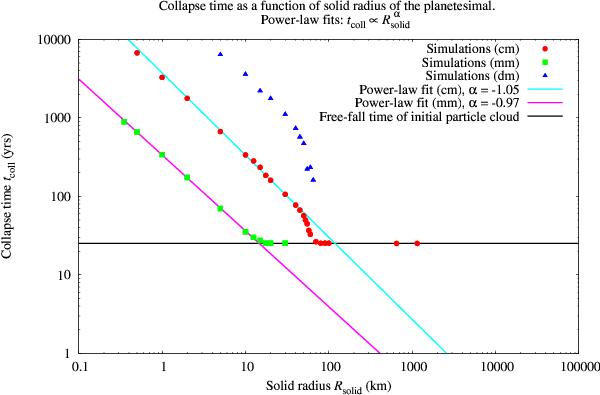Fig. 3

Collapse time as a function of solid planetesimal radius for clouds with initially monodisperse mm-, cm-, or dm-sized pebbles. Power-law fits to the data and the free-fall time of the initial cloud (tff ~ 25.1 yrs) are added to the plot. For small planetesimals (≲50 km) the collapse time is inversely proportional to the planetesimal radius and increases linearly with the pebble size. This is the same relation as we find in Appendix A where we assume bouncing as the only collisional outcome. For larger planetesimals (Rsolid ≳ 50 km) the collapse time drops rapidly as pebbles fragment and the number density and collision rates increases. The collapse time is, however, limited downwards by free-fall, so for even larger planetesimals with Rsolid ≳ 70 km the collapse time is equal to the free-fall time of the initial cloud.
Current usage metrics show cumulative count of Article Views (full-text article views including HTML views, PDF and ePub downloads, according to the available data) and Abstracts Views on Vision4Press platform.
Data correspond to usage on the plateform after 2015. The current usage metrics is available 48-96 hours after online publication and is updated daily on week days.
Initial download of the metrics may take a while.


